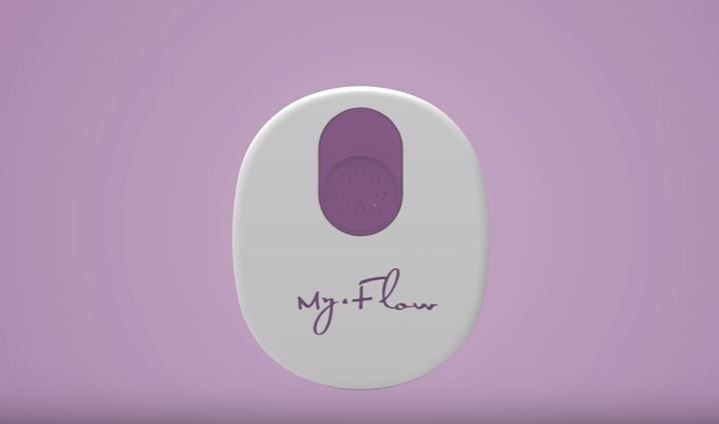New Period Tracker Helps Women Track Their Menstrual Cycle In Real Time

We live in a data-driven society, with the number of calories we eat, steps we take, and money we spend all delivered right to our phones. Now, Amanda Brief and Jacob McEntire want to offer something similar to women who are on their period. Introducing my.Flow.
The monitor is a waistband clip that looks about the size of a compact mirror. It’s meant to be used with my.Flow brand tampons, which have a longer tail (about 6 inches longer). Women insert the tail end into the monitor and position it under their clothes, either on their waistband or underwear. Once the monitor lights up, it starts transmitting data to an app women can customize right on their phone. The app then sends women text reminders to check their app so they can see how full their tampon is.
At the end of the day, the founders' goal is to “obliterate period anxiety,” starting with preventing leakage, their website says.
Current period-tracking apps for tampon wearers require women to enter their data manually, Brief told Medical Daily in an email. But for those interested in being “their own data monkey,” my.Flow works to detect saturation and send the data to women versus them keeping track of it themselves.
“The user experience aim is convenience and curbing anxiety,” Brief added. “Currently, you can’t check the level of your tampon as it’s inside you, so many people err on the side of taking their tampon out prematurely, which is not only wasteful, but quite physically uncomfortable as well.”
Brief and another woman in her office have had success with the prototype, each finding that the monitor helps them to track their flow in real time — ”an incredibly exciting experience,” Brief said. In addition to letting women know when it’s time to change their tampon, my.Flow is also designed to track when a woman’s period starts and what days her flow will be heaviest.
With the proof of concept and sound engineering in place, Brief said the next step is to bring the monitor to market. Tech Times suggested the shape of it is “a seemingly prohibitive, backward way of doing things in this day and age,” but Brief said she and the my.Flow team are working to make the device even smaller before it’s made available.
The waistband clip is also ideal over, say, a wristband because it’s in close proximity to the tampon string. For women who want to lessen the anxiety around their period, Brief thinks a discreet monitor they can clip under their clothes is a worthy trade-off.
“The physical design is a continuing effort, but we’re almost there,” she said. “It’s also worth noting that some people we’ve talked to would opt not to wear the monitor at all times; rather, they would choose to intermittently connect the tampon string to the monitor when they head to the bathroom every couple of hours to check their tampon’s current status.”
The monitor also alerts women by phone. There’s no vibrate, buzz, or audible alarm — a design decision Brief said was “based on our market research of hundreds of tampon users.” In that research, 82 percent of survey respondents said they were ready for a product that would prevent them from toxic shock syndrome and other menstrual-related complications. So far, the readings have been accurate, and the device is slated for a 2017 release.
There’s a bit of social justice backed into the monitor, too. When asked about a potential price point, Brief said it won’t be a luxury item, but rather it will be accessible to all menstruators. This calls to mind the tampon tax several states are fighting to eliminate, the argument being if something like Viagra isn’t taxed, then why are tampons and pads? Birth control, condoms, and yeast medications are tax-free too, which has led some to believe the tampon tax is in place to shame women for getting a period, NPR reported.
That’s also assuming women can even access tampons. According to Newsweek, young girls and women around the world don’t have access to clean, safe, and affordable menstrual materials as a result of persistent taboos, poverty, and stigma. Of the range of hygiene behaviors considered important for health, menstrual management ranked high on UNICEF’s list; “it’s a priority for improving the health, welfare, and dignity of women and girls.”
An affordable device, like my.Flow, could empower women’s health, allowing them to manage their flow when conditions are less than ideal and, in some cases, downright dangerous. “Virtually everyone with a period has experienced at least some of its negative effects,” Brief said. “We aim to bring peace of mind, period.”



























